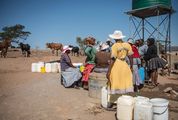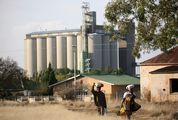IT’s been an abiding feature of New World wine-producing countries that cultivar enjoys at least as much prominence as origin. Even once California had begun displacing French supremacy after the "Judgment of Paris" tasting of 1976, the pre-eminent wines were known first by the brand or cellar name — Stag’s Leap or Chateau Montelena — then by the variety, and only after that by the appellation, such as Napa and Sonoma.
It has taken about 30 years for subregions such as Carneros, Russian River and Howell Mountain to become part of the vocabulary in the same way as Margaux and Pauillac are everyday terms for buyers of fine Claret.
SA’s wine of origin legislation dates back to the early 1970s. It had clearly been the intention of those who drafted it that quite soon (they appear to have been thinking in terms of years rather than decades) people would ask for a bottle of Stellenbosch, Paarl or Constantia wine, rather than for its brand name.
In the very early days after the promulgation of the act, one of the major producers even created regional wine brands. Consumers who embraced the idea that origin really made a difference could go out and buy a bottle of SFW Stellenbosch Cinsaut or Cabernet.
TIME has disposed of their optimism: many of the estates established as a result of this legislation have abandoned the pretence of site and buy in grapes from vast swathes of the Cape winelands. As anyone who bothers to read the small print of South African wine labels will attest, origin barely matters any more.
Most wines are labelled with the generic "Wine of Western Cape", the South African equivalent of "South Eastern Australia". Most punters don’t seem to care much where the grapes are grown — but they do want to know what varieties went into the wine.
Until about 25 years ago, the Wine and Spirit Board prohibited the disclosure of varieties in blended wines. With that regulation out of the way, producers usually provide this information on the packaging and on their websites.
Despite this, blended wines still operate at something of a disadvantage, especially if the cultivars that went into their production have not been revealed. Kevin Grant at Ataraxia may enjoy his private joke of not disclosing the component parts of his Serenity red blend, but it’s a safe prediction that if he were to say what had gone into it, it would be an easier sale. Even blends with a strong brand name generally offer details on what went into the vats. The Wolftrap wines (both red and white) sell themselves on value. However, their brand appeal is enhanced by the clear cultivar messages on their bottles (white: Viognier, Chenin, Grenache; red: Shiraz, Mourvèdre, Viognier).
I RAN some dipstick research among a few wine-literate colleagues, asking what their favourite blends were. Our lists shared much in common, unsurprisingly with a strong preference for whites rather than reds. We agreed not to include unobtainable rarities such as Palladius and Aristargos, and we included Steenberg’s highly priced Magna Carta only because it is readily available.
However, the white Bordeaux blends from Oak Valley, Cape Point Vineyards, Vergelegen, Morgenster and Delaire Graff easily made the list, as did several of the Chenin combos such as DeMorgenzon Maestro, Vondeling Babiana and Alheit Cartology.
The reds proved more challenging, with a couple of smart Bordeaux-style assemblages such as Kanonkop Paul Sauer, Rubicon, Vilafonte and Delaire Graff Botmaskop enjoying solid support.
What struck me most, however, was that despite a climate conducive to Mediterranean-style blends, there were no consensus-based candidates in this category once one excluded the "allocation only" wines from the small Swartland producers, who operate in the perfect environment for this style of wine.
It is clear that the category has yet to gain traction, and for this the wines will need to offer more than Shiraz with a splash of something else.



















Change: 2.98%
Change: 3.39%
Change: 2.94%
Change: 3.00%
Change: 5.00%
Data supplied by Profile Data
Change: 2.19%
Change: 1.22%
Change: 2.98%
Change: 0.00%
Change: 1.91%
Data supplied by Profile Data
Change: -0.59%
Change: 0.03%
Change: -1.31%
Change: -1.36%
Change: -0.58%
Data supplied by Profile Data
Change: -0.52%
Change: 1.33%
Change: -0.64%
Change: 0.26%
Change: 6.76%
Data supplied by Profile Data